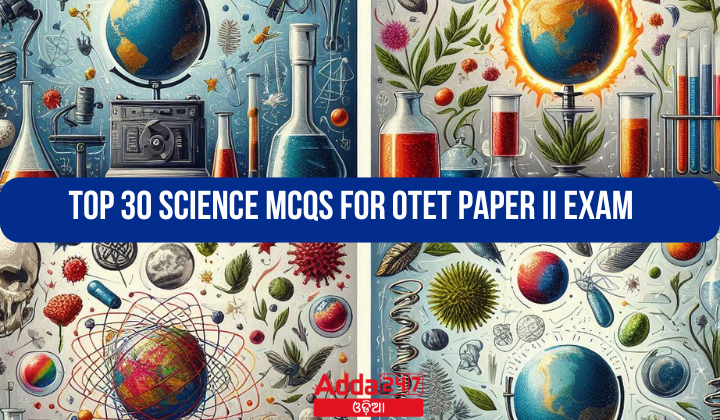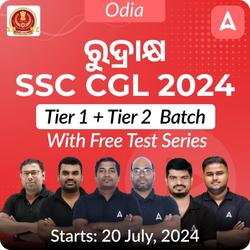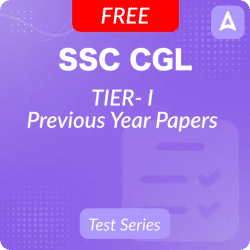Preparing for the OTET Paper II Exam requires a solid understanding of science concepts. This compilation of the top 30 science MCQs is tailored to help candidates gauge their knowledge and improve their chances of success. These questions cover a wide range of topics from physical science to life science, including key areas such as metals, non-metals, metalloids, chemical reactions, force, motion, and the solar system. Practicing these questions will not only test your understanding but also familiarize you with the exam format and the type of questions asked.
Top 30 Science MCQs For OTET Paper II Exam
- What is the primary aim of teaching science at the upper primary stage?
(a) To develop scientific temper
(b) To prepare students for competitive exams
(c) To enhance rote learning
(d) To memorize scientific facts
Ans: (a) To develop scientific temper - Which of the following methods is most effective for teaching science through observation?
(a) Lecture method
(b) Discovery method
(c) Experimentation method
(d) Project method
Ans: (c) Experimentation method - What is the main objective of using the project method in science teaching?
(a) To finish the syllabus quickly
(b) To promote collaborative learning
(c) To encourage memorization
(d) To avoid practical activities
Ans: (b) To promote collaborative learning - Which approach integrates different subjects into the science curriculum?
(a) Constructivist approach
(b) Integrated approach
(c) Experimental approach
(d) Discovery approach
Ans: (b) Integrated approach - The constructivist approach in science education emphasizes:
(a) Teacher-centered learning
(b) Rote memorization
(c) Learner-centered discovery
(d) Standardized testing
Ans: (c) Learner-centered discovery - Which tool is most suitable for assessing students’ understanding in science?
(a) Multiple-choice questions
(b) Practical experiments
(c) True/false statements
(d) Essay writing
Ans: (b) Practical experiments - Which technique can be used to evaluate the application of scientific concepts?
(a) Oral test
(b) Written test
(c) Project work
(d) Group discussion
Ans: (c) Project work - Why is it important to teach the nature of science at the upper primary stage?
(a) To prepare students for high school
(b) To develop critical thinking and inquiry skills
(c) To make students memorize scientific facts
(d) To follow the curriculum strictly
Ans: (b) To develop critical thinking and inquiry skills - Which method encourages students to solve problems based on scientific principles?
(a) Lecture method
(b) Problem-solving method
(c) Demonstration method
(d) Storytelling method
Ans: (b) Problem-solving method - A teacher uses models to explain the structure of the atom. This method is:
(a) Discovery method
(b) Observation method
(c) Project method
(d) Demonstration method
Ans: (d) Demonstration method - Which of the following states of matter has a fixed shape and volume?
(a) Solid
(b) Liquid
(c) Gas
(d) Plasma
Ans: (a) Solid - Which state of matter is characterized by particles that are closely packed and have a strong force of attraction?
(a) Solid
(b) Liquid
(c) Gas
(d) Plasma
Ans: (a) Solid - What is the state of matter where particles can only vibrate around their mean positions?
(a) Liquid
(b) Solid
(c) Gas
(d) Plasma
Ans: (b) Solid - In which state of matter do particles take the shape of their container but have a fixed volume?
(a) Solid
(b) Liquid
(c) Gas
(d) Plasma
Ans: (b) Liquid - Which state of matter has the highest rate of diffusion?
(a) Solid
(b) Liquid
(c) Gas
(d) Plasma
Ans: (c) Gas - What is the primary characteristic of particles in a gaseous state?
(a) They are tightly packed
(b) They have negligible force of attraction
(c) They are rigid
(d) They have fixed volume
Ans: (b) They have negligible force of attraction - Which state of matter has neither a fixed shape nor a fixed volume?
(a) Solid
(b) Liquid
(c) Gas
(d) Plasma
Ans: (c) Gas - What happens to the kinetic energy of particles in the gaseous state compared to solids and liquids?
(a) It decreases
(b) It remains the same
(c) It is higher
(d) It is lower
Ans: (c) It is higher - The force between two charged bodies is called
(a) Muscular force
(b) Gravitational force
(c) Magnetic force
(d) Electrostatic force
Answer: (d) Electrostatic force - When two forces act in opposite directions, then net force acting is the
(a) Sum of two forces
(b) Differences between two forces
(c) Both of these
(d) None of these
Answer: (b) Differences between two forces - State the motion is described by
(a) Position of rest
(b) Position of motion
(c) Both by the state of rest or motion
(d) None of these
Answer: (c) Both by the state of rest or motion - Magnetic force is
(a) Contact force
(b) Non-contact force
(c) Both a and b
(d) None
Answer: (b) Non-contact force - Force acts on an object may change
(a) Direction
(b) Shape
(c) Speed
(d) All of above
Answer: (d) All of above - The net force on an object is zero if the two forces act on it in
(a) Opposite direction
(b) Same direction
(c) Sometimes opposite and sometimes in same direction
(d) All of above
Answer: (a) Opposite direction - Leaves or fruits fall on the ground due to
(a) Magnetic force
(b) Gravitational force
(c) Electrostatic force
(d) Muscular force
Answer: (b) Gravitational force - Otto von Guericke was a scientist of
(a) Italy
(b) Russia
(c) Germany
(d) America
Answer: (c) Germany - Which of the following is an example of a strong acid?
(a) Acetic acid
(b) Hydrochloric acid
(c) Citric acid
(d) Lactic acid
Ans: (b) Hydrochloric acid - What is the pH value of a neutral solution?
(a) 0
(b) 7
(c) 14
(d) 1
Ans: (b) 7 - Which of the following indicators turns red in an acidic solution?
(a) Methyl orange
(b) Litmus
(c) Phenolphthalein
(d) All of the above
Ans: (b) Litmus - Which gas is released when an acid reacts with a metal?
(a) Oxygen
(b) Nitrogen
(c) Hydrogen
(d) Carbon dioxide
Ans: (c) Hydrogen










